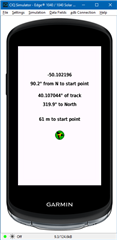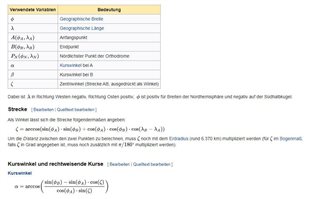In my Edge datafield I want implement an arrow pointing to the start location of the activity and write the (direct) distance to the start point.
I‘m wondering if I can use Activity.Info.bearingFromStart. The description is not clear (for me):
Bearing from start is the direction of desired track from the start of navigation to the destination in radians. This is only dependent on your location when a course is set, and it is not dependent on where you may have moved to during an activity.
I think, it might be the bearing from my current location to the destination and has less to do with the start location…?
To achieve my goal: do I have to set a location at the start point and then calculate the direction and the distance to that point from my current position - Activity.Info.currentLocation? Or is there any other - simpler - way?
Thank you!



